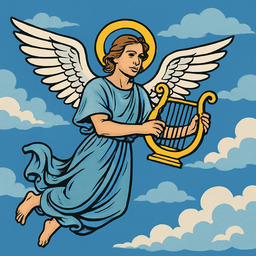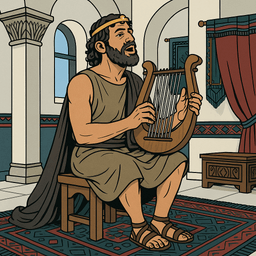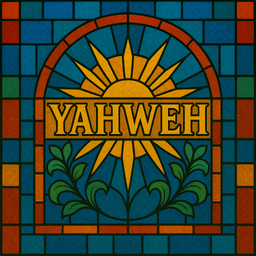
Why a New Translation?
There are over 450 translations of the Bible in English. So why do we need another one?
This page explains some of the reasons why, back in 2000, our first editor began work on this Bible translation.
- Most Bible translations use corrupted manuscripts
- Most Bible translations have fake verses
- Most Bible translations have biased wording
- Most Bible translations use old misleading terms
- Most Bible translations are poorly formatted
- Most Bible translations have annoying copyright restrictions
- Most Bible translations are not poetic
- Most Bible translations are not open to correction
- Most Bible translations are allergic to God’s Name

1. Most Bible translations use corrupted manuscripts
The early Christians preferred to use the Greek Septuagint text of the Old Testament, instead of newer translations from Hebrew.
Why? They accused the early Rabbis (who descended from the sect of the Pharisees) of altering the Hebrew Bible text to remove or water-down the prophecies of the Messiah. Of course, the Pharisees denied this and accused the early Christians of corrupting their text.
Who was right?
Discoveries like the Dead Sea Scrolls have confirmed some of the early Christians’ suspicions. The Hebrew text did indeed read differently in certain places in earlier centuries, and variants existed of some texts.
It seems that someone altered the Bible’s chronology to discredit Jesus, and the Hebrew copyists cherry-picked from existing variants of prophecies to pick ones that would discredit the Christian community.
Then, around AD 382-405, the Pope commissioned the theologian Jerome to create a new Bible translation in Latin, but certain scholars persuaded him to primarily use the ‘original’ Hebrew text instead of the Greek Septuagint.
Many Christians strongly disagreed with this change, with big names such as Augustine of Hippo and even the Roman Emperor Theodosius II writing to the Pope to protest, but to no avail.
That Bible translation is the Latin Vulgate, and it became the official Latin translation of the Church and is the basis for most modern Bible translations today. So yes, most Bible translations use manuscripts that reword or even remove certain prophecies of the Messiah!
Our translation returns us to the Greek Septuagint text of the Old Testament, containing the original prophecies of the Messiah, just as the early Christians would have wanted.
- See the restored Messianic prophecies

2. Most Bible translations have fake verses
All Bible translations contain a small percentage of known and suspected fake verses. For example, the following passages are not found in the oldest manuscripts, but many translations keep them in because they are popular:
- The contradictory additions about David and Goliath found in 1 Samuel 17:12 onwards.
- The woman caught in adultery was inserted into John 8:1-11.
- The phrase ‘…the Father, the Word, and the Holy Ghost, and these three are one’ was inserted into 1 John 5:7-8.
- And others.
Not only do most modern Bibles often keep these passages, but many don’t even add a footnote to warn the reader that they are disputed!
Our translation identifies and grays-out any suspected fake words or verses.
- See our list of spurious texts.

3. Most Bible translations have biased wording
All major Bible translations have bias in favor of Church doctrines and authority.
For example:
- At Hebrews 13:17, many Bibles say, ‘Obey those who rule over you, and be submissive’, but the 2nd century Aramaic text says ‘have confidence in your shepherds, and listen to them’. Could someone have changed the Greek text to embolden the authority of men?
- At Colossians 2:9 the KJV (and other translations) adds the word ‘Godhead’, a term completely missing from the original Greek text. Why did they add this?
- In John 1:1, most translations fail to mention that different Greek terms are used for God and ‘the Word’. Why hide this from readers?
Our translation identifies and corrects these biases. See our lists of biases for supporting the authority of men, the Trinity, the afterlife, against women, and the end-times.
Most modern translations are funded by a Church or faith-based organization, so the translators and publishers have bosses or customers to answer to. They are often compelled to translate certain verses in specific ways, or face financial ruin.
We are run by volunteers, who have no bosses or customers to answer to, and do not use it for profit, meaning we can even make unpopular decisions!

4. Most Bible translations use old misleading terms
Most Bible translations prefer traditional terms that have gained new meanings and connotations over the centuries; they spark ideas in your imagination not present in the minds of the original writers.
Some examples:
- Angel: This word really just means a messenger, and many of these messengers from God appear no different from humans, but many people imagine a winged creature, dressed in white, with a halo. To avoid this, we use the neutral term messenger.
- Baptism: This word accurately means to immerse or dip in water, but many people think it means sprinkling with water. To avoid this, we use the neutral term immersion.
- Christ: This word really just means anointed one, but many people think it’s Jesus’ last name. To avoid this, we use the neutral term Anointed One.
- Hell: The word for ‘hell’ really just means the place of the dead or the grave, while sometimes it refers to a landfill outside of Jerusalem, but many people think it’s a burning underground chamber where unrepentant sinners are tortured. To avoid this, we use the neutral term the grave or garbage dump.
See our full list of neutral terms.
5. Most Bible translations are poorly formatted
Most Bible translations have little or no modern formatting, often to save space when printing. This limitation means they’re mostly just big ‘walls of text’.
They’re:
- Intimidating
- Hard to read
- Often a chore to get through
Our translation is entirely online, so we have space to add notes, illustrations, indentation, bullet lists, bold and italics, and other formatting to make the text more readable.
6. Most Bible translations have annoying copyright restrictions
Most modern translations must support themselves as commercial operations; so they must be protected by copyright to ensure their survival.
This means you are severely limited in how you can use them. Some even dictate how many times you can quote from them in blog posts, videos, and other media (which is very annoying if you’re a writer or content creator).
On the other hand, the text of our translation was created by volunteers and its latest version is freely available under a Creative Commons BY-NC-SA 4.0 International license, so you can:
- Quote it as much as you want
- Share it as much as you want
- Print it as much as you want
You do not need to ask permission to do these things.
There are only a few sensible restrictions, such as disallowing commercial use. For details, see our copyright page and the license page.

7. Most Bible translations are not poetic
The original source texts were often written as poetry, but most translations do not recreate the poetic style of the original texts. That’s a shame.
Many do this so they can prioritize accuracy; however, we believe we can have our cake and eat it too. By adding or deleting extraneous words, we believe we’ve managed to at least give the poetic texts a similar feel, while maintaining the original meaning.
After all, the emotional impact is a big part of the text! There’s more to accuracy than merely the right words, the right feelings have to be conveyed too.
Unfortunately, most translations don’t even try. We, however, do!

8. Most Bible translations are not open to correction
Anyone can submit a correction to our translation.
We will review it and, if it’s correct, the correction will be published. Since we’re primarily online, all readers around the world can see the correction immediately. That’s not possible with traditional print media.

9. Most Bible translations are allergic to God’s Name
Most translations have removed God’s personal name — Jehovah or Yahweh (Hebrew: יהוה) — from the Old Testament, replacing it with the title ‘LORD’ over 5,500 times.
It gets worse in the New Testament. The writers still referred to God’s Name and often quoted Old Testament verses containing it, but they followed the respectful, centuries-old custom of using a ‘circumlocution’ (a substitute word, usually ‘Lord’).
Ancient readers knew exactly what this meant. Special grammar was used to indicate when ‘Lord’ actually meant ‘[insert God’s Name here]‘.
It was “Lord” with a wink.
However, most modern translations just say ‘Lord’ without explanation, hiding where God’s Name was present in the Old Testament, and not even mentioning when it was represented by a circumlocution in the New Testament.
Our translation restores God’s Name wherever it belongs in the Old Testament. We also show you where it’s present in the New Testament as a circumlocution, making the original meaning clear.
- Read more about God’s Name, the circumlocutions for it, and its use in the New Testament.